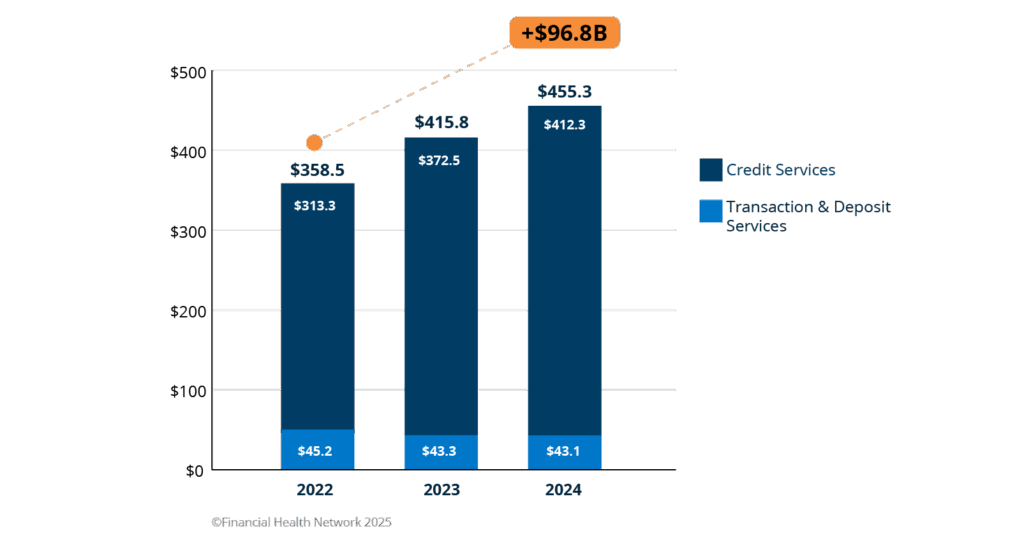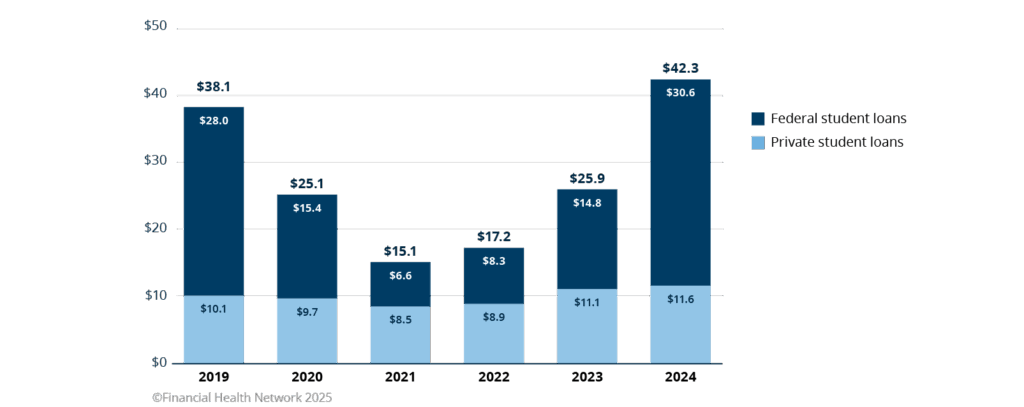Research Paper
FinHealth Spend 2025: The Cost of Financial Services For American Households
Financial Health Network research reveals that Americans spent $455 billion in financial services fees and interest in 2024 as credit costs, student loans, and deep inequities strain households.

FinHealth Spend 2025: The Cost of Financial Services For American Households
Tuesday, October 28, 2025




